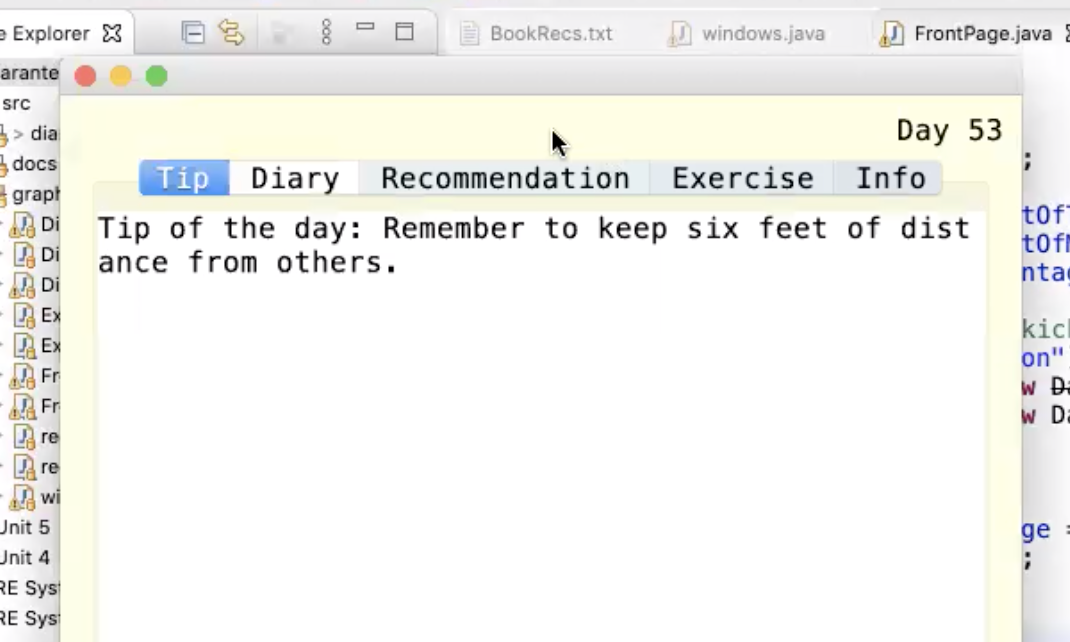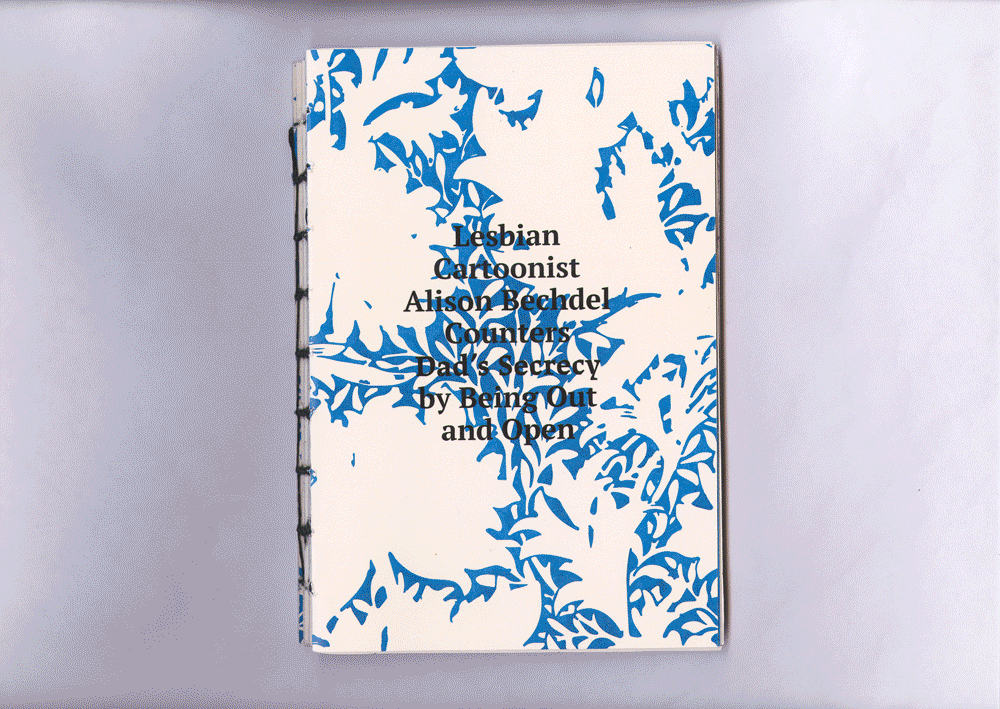
“My dad and I both grew up in the same, small Pennsylvania town.
And he was gay, and I was gay. And he killed himself. And I… became a lesbian cartoonist.”
And he was gay, and I was gay. And he killed himself. And I… became a lesbian cartoonist.”
Alison, “Welcome to Our House on Maple Avenue”
Titled “Lesbian Cartoonist Alison Bechdel Counters Dad’s Secrecy by Being Out and Open,” this book explores dualities like open/closed, honest/secretive, shown/hidden, and alive/dead. One major motif, the floral wallpaper, conveys these themes through layering effects. Interspersed throughout the book are panels from Bechdel’s graphic memoir “Fun Home” and song lyrics from the subsequent musical on colorful short-sheets.
The book integrates three different sources—panels from “Fun Home” the graphic memoir, lyrics from “Fun Home” the musical, and Terry Gross’ interview with Alison Bechdel, Lisa Kron, and Jeanine Tesori—to illustrate the “tricky reverse narration” Alison Bechdel and her father shared.






In my junior year of high school, I read the first chapter of “Fun Home” in an anthology for English class. That summer, I was fortunate to see a performance of the musical “Fun Home” in an off-Broadway production at New York’s Circle in the Square theater. I continued to read all of “Fun Home” and “Are You My Mother?” and saw the musical again in Houston, TX. It is a story that has stuck with me for many years, in no small part to my writing mentor Kathleen Finneran.
When asked to create a book using a transcript from a podcast (sourced from NPR, 99% Invisible, or The Daily), I immediately scoured archives of NPR, which I had listened to every day on the radio growing up. I found that this interview, Lesbian Cartoonist Alison Bechdel Counters Dad’s Secrecy by Being Out and Open, got to the heart of the story of “Fun Home” and answered many questions I had about the process of adapting the graphic memoir to a musical.






Out of curiosity, I asked around ten friends if they knew who Alison Bechdel was. Only half recognized her name, and only two knew “Fun Home.” With the knowledge that “Fun Home” and Alison Bechdel were not widely known in the mainstream, I realized I had my work cut out for me.
To provide any reader with a cursory understanding of “Fun Home,” I selected panels from the 2006 graphic memoir (by Alison Bechdel) and lyrics from the 2013 musical (based on Bechdel’s memoir with songs written by Tesori and lyrics written by Kron). Each source is handled distinctly: panels are shown on smaller boxes to give the illusion of a page within a page, lyrics are set on colored short-sheets, and the interview is the main text of the book.






The four speakers are denoted primarily by text color (dark gray for Gross, turquoise for Bechdel, red for Kron, and purple for Tesori). To further distinguish speakers, Gross’ text is set in Halyard (a sans serif typeface) while Bechdel, Kron, and Tesori’s texts are set in PT Serif. Throughout the book runs themes of concealment versus openness via hidden and shown elements. For example, pullquotes utilize subtle distinctions between PT Serif (more round) and Lapture (more angular) to illustrate subtle distinctions between Bechdel and her father.
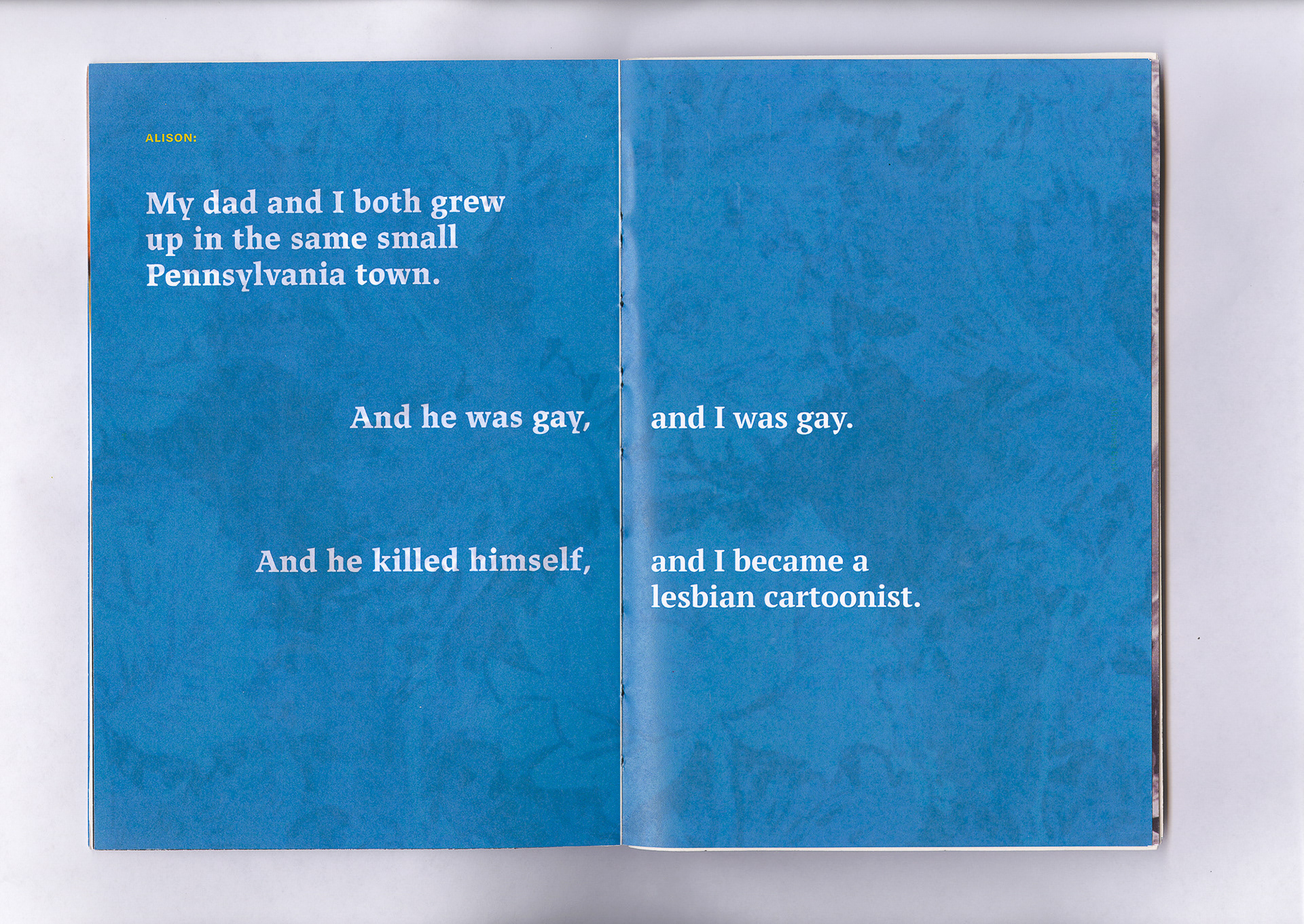





In terms of production, I wanted the binding to reflect the metaphor of concealment versus openness. I chose to use coptic binding, an open binding method that strings together signatures and allows the open book to lay flat. This means anything in the margins is exposed and visible, much like Alison Bechdel has achieved with her career as a lesbian cartoonist. It was my first time binding coptic, and I used thread that ended up being too thick.
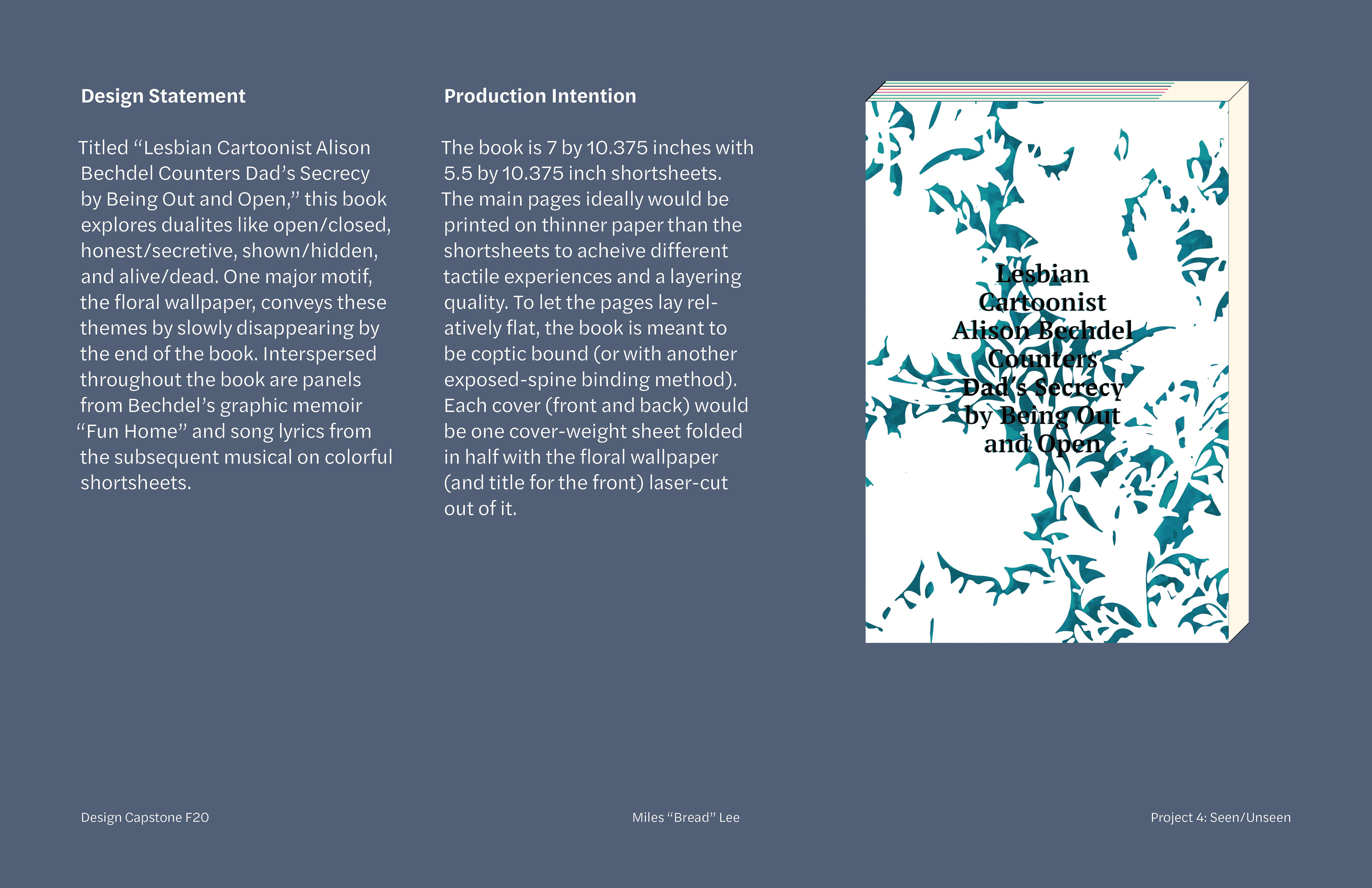

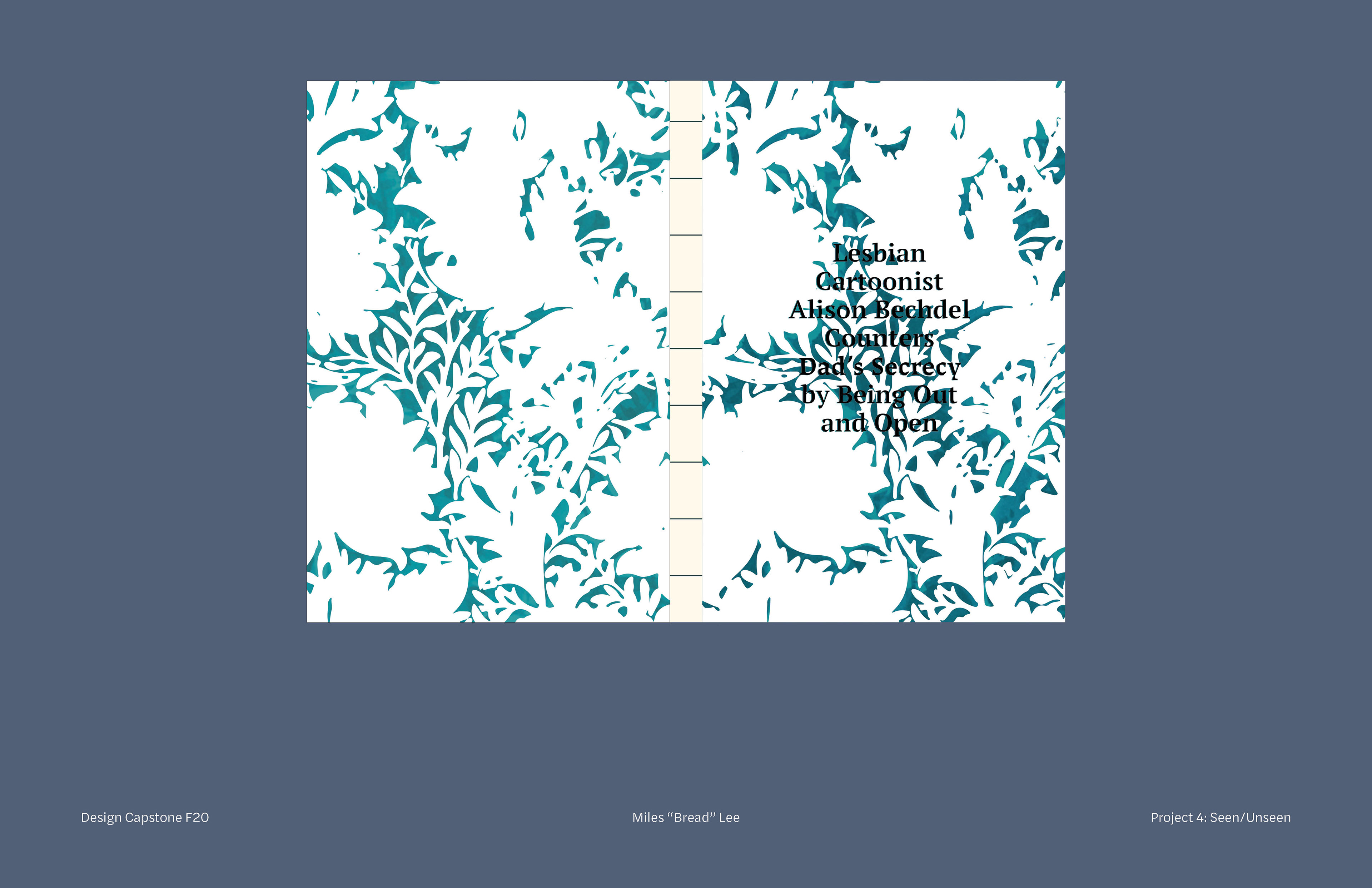



I wanted the cover to emphasize the metaphor, so I ideated around mylar layers or lasercut layers of Bruce Bechdel’s Victorian-era wallpapers (William Morris’ chrysanthemums), one of the motifs that runs throughout my book. Unfortunately, due to the COVID-19 pandemic, my dreams of lasercutting and mylar sheets have not been fully realized.


Within the book, I included photography of Alison Bechdel and her family to celebrate her achievements and emphasize that “Fun Home” is not a work of fiction. Some spreads are inspired by Karel Martens’ “Motion” book, which heavily relies on the recto page to display imagery while leaving the verso page blank. Starting at the “Telephone Wire” section (just before Bruce Bechdel dies), I used the same method to slow down the pacing.
Right before the interview wraps up, I paired the only full-color photo of Bruce Bechdel I could find with a full-color photo of Alison Bechdel. The wallpaper is subtly layered over the photograph of Bruce. Alison’s photograph is layered over the wallpaper instead.






I would love to revisit this book someday. There are definitely opportunities to hone in on the typesetting, design a stronger cover concept, and reprint/rebind it. If you aren’t familiar with “Fun Home,” I hope this has piqued your interest! If you are familiar, please let me know how I handled the material.
Below are all spreads of the book. You can also view them on issuu.












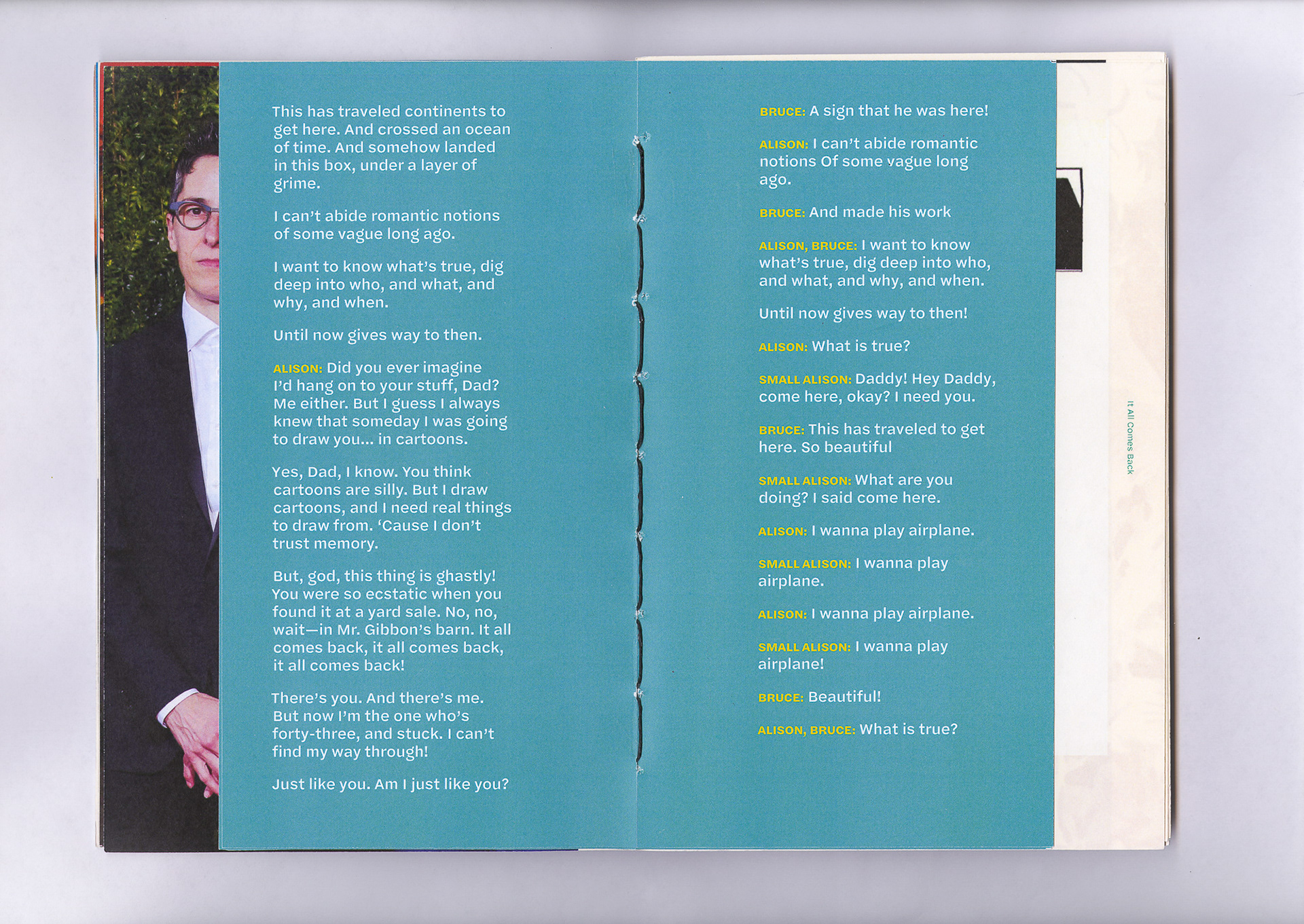







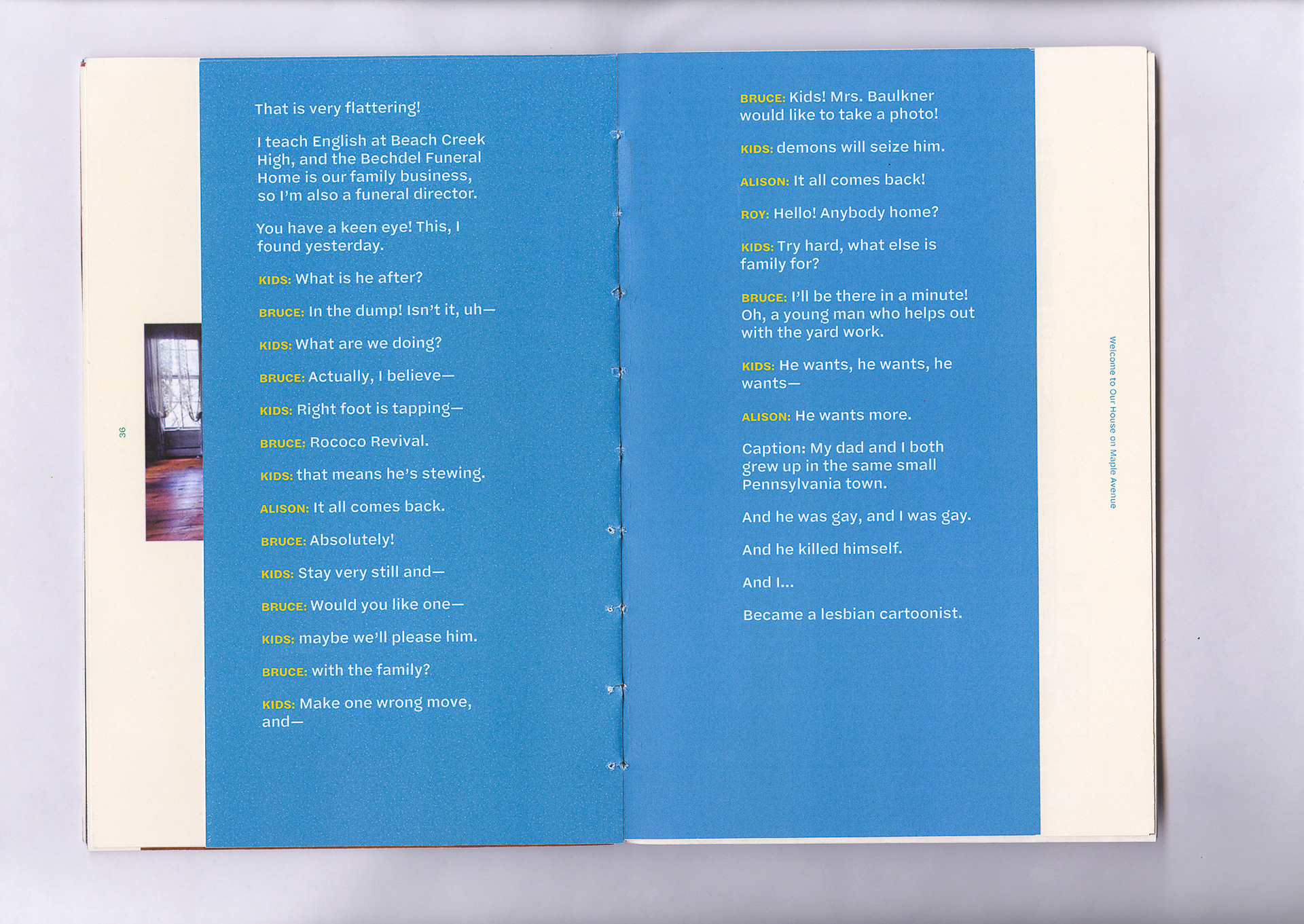
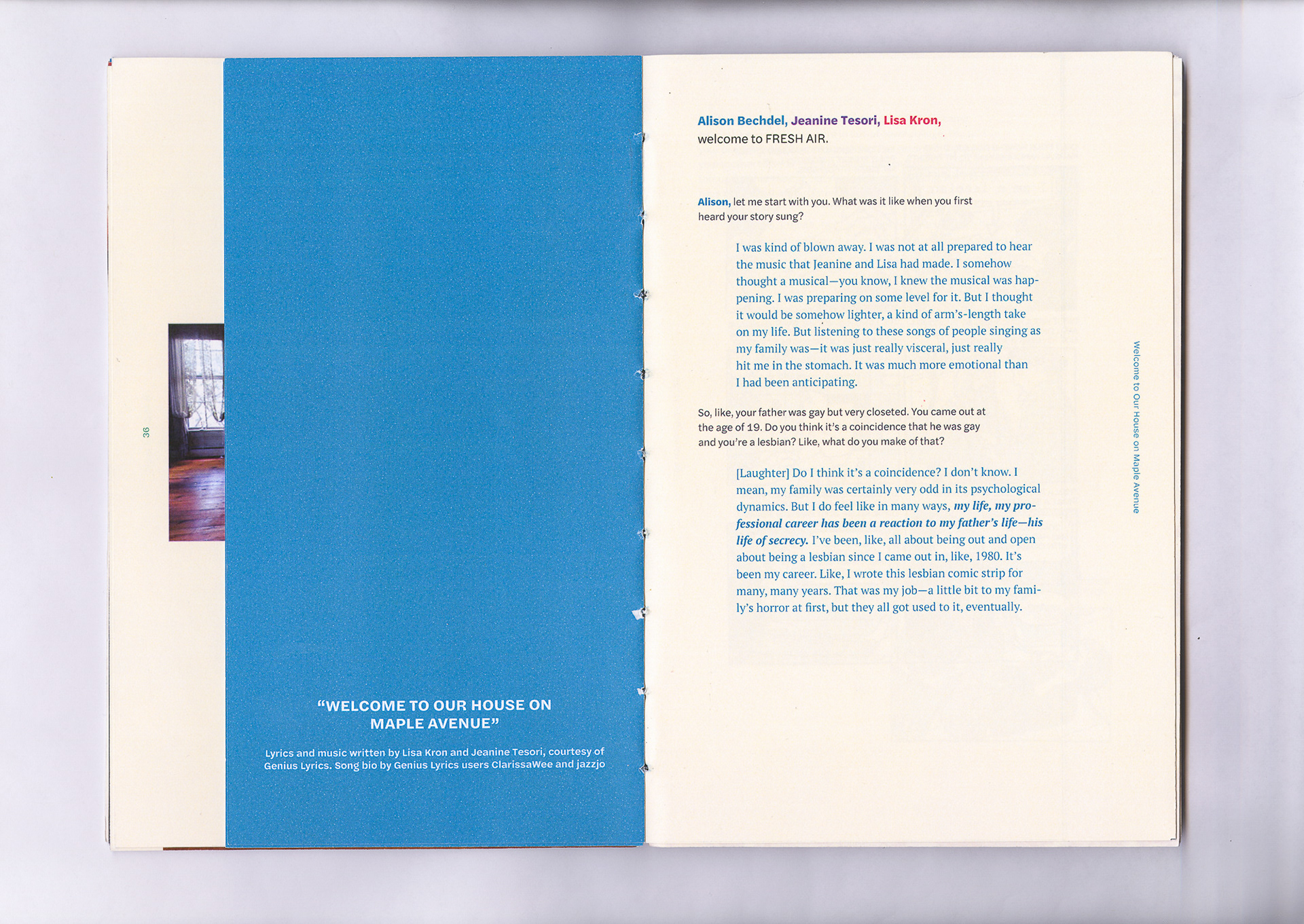












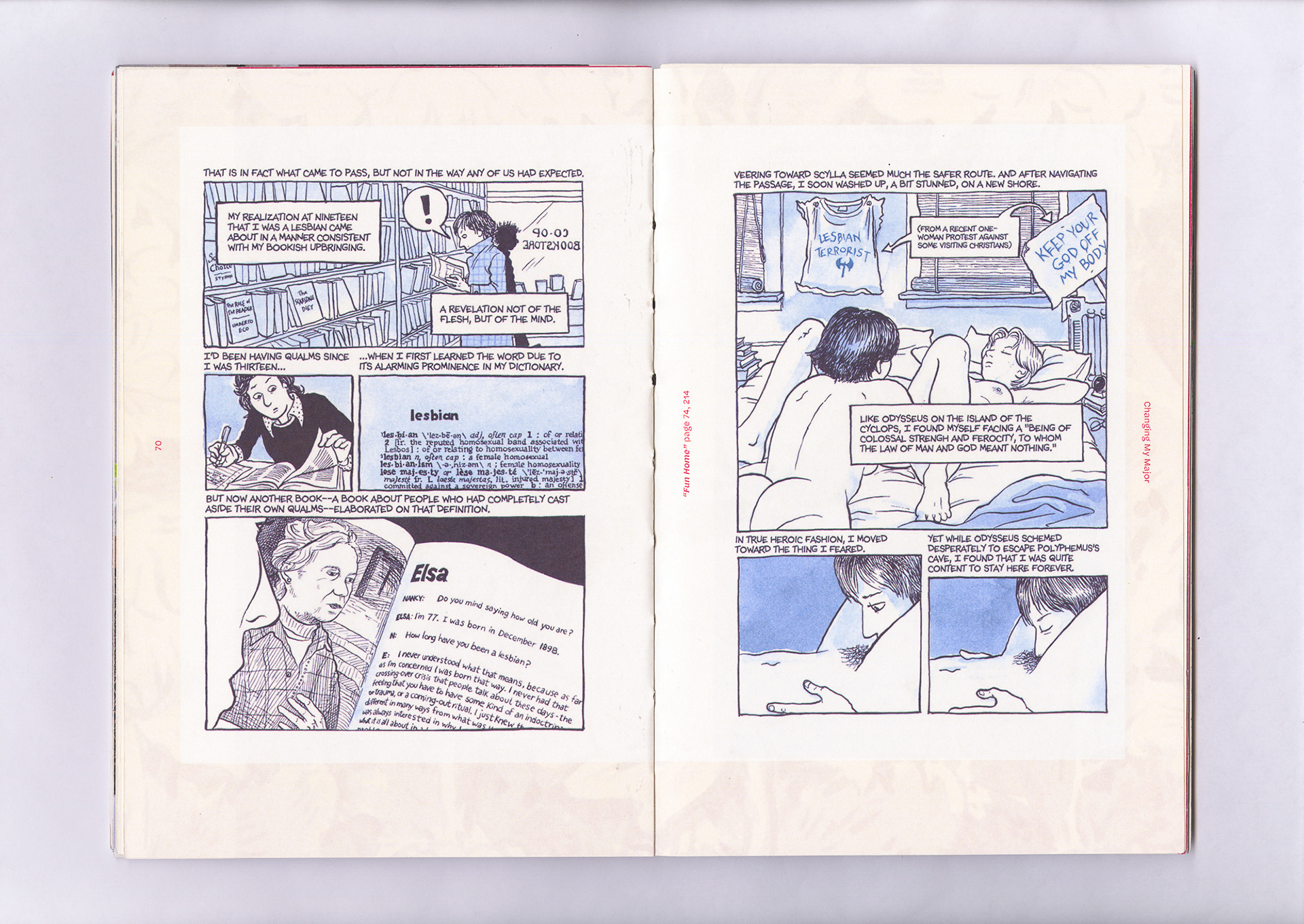


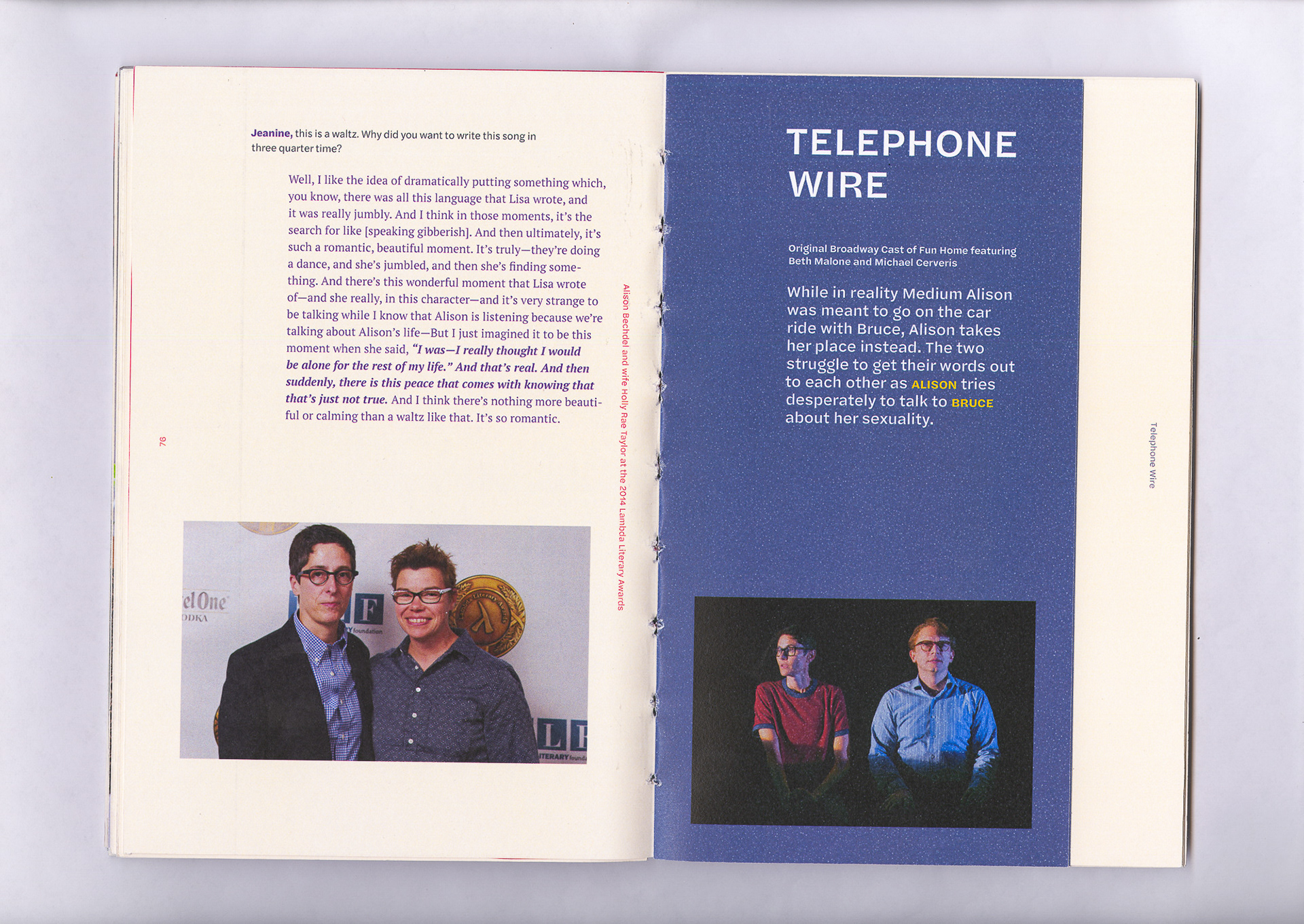
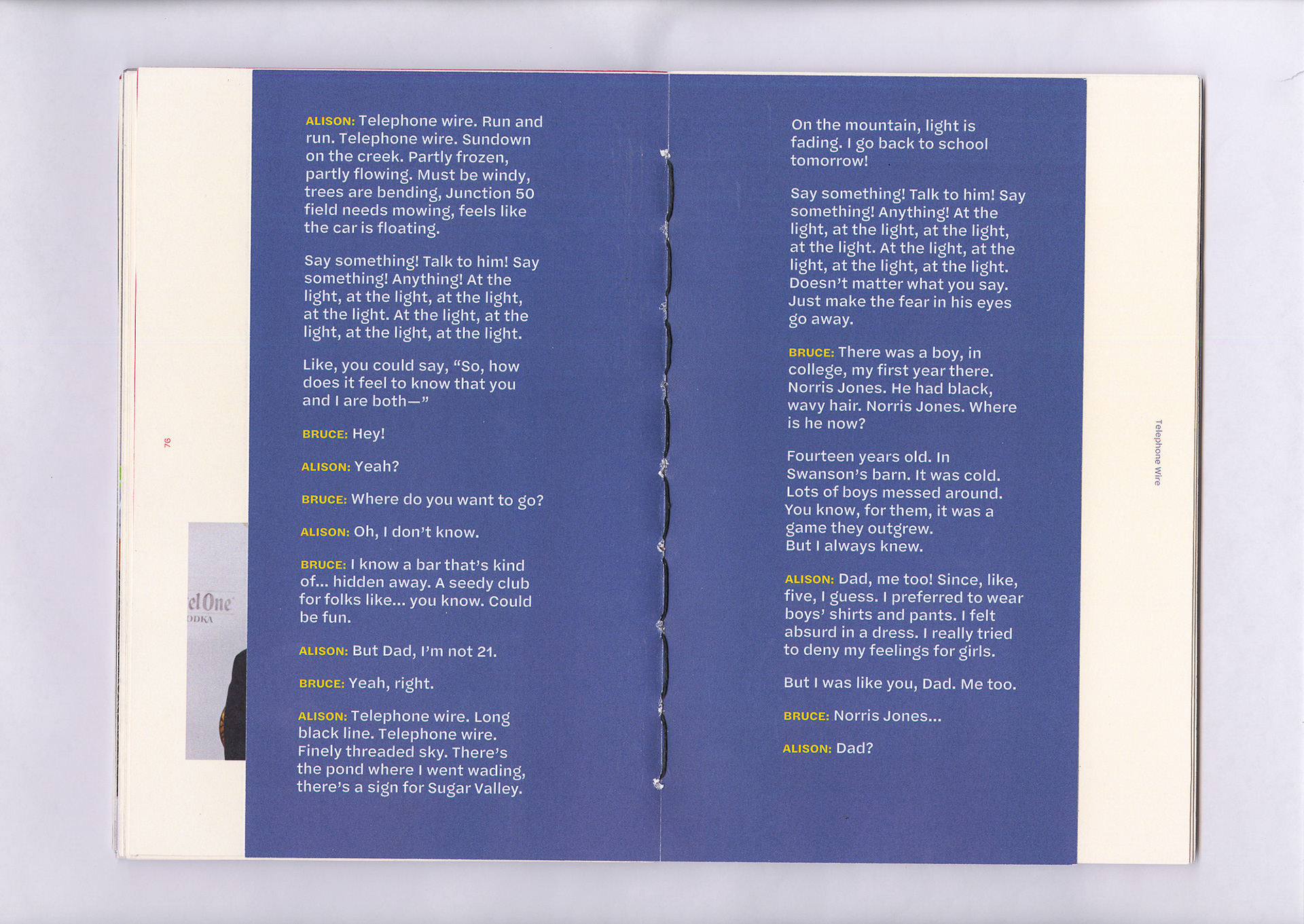
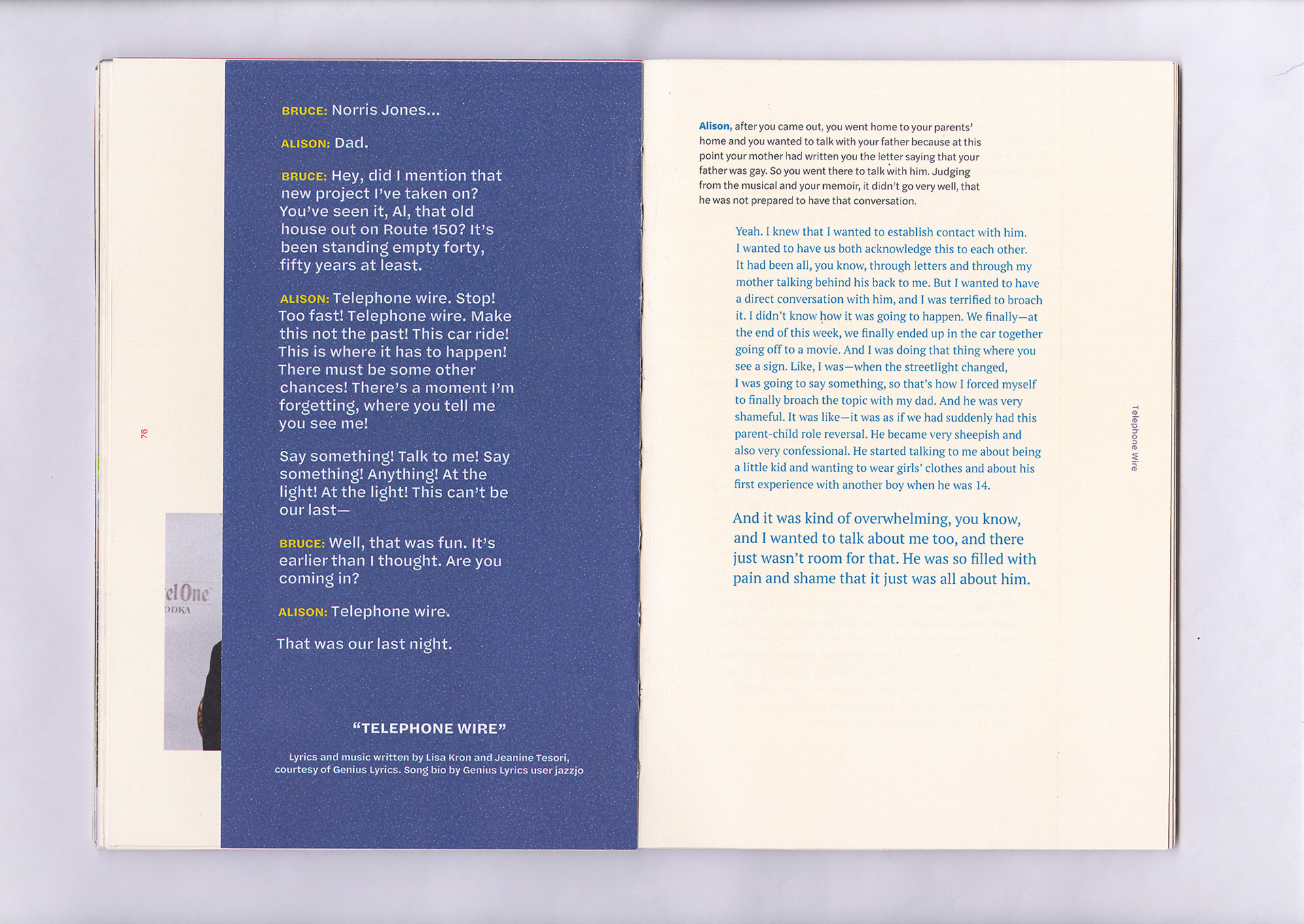













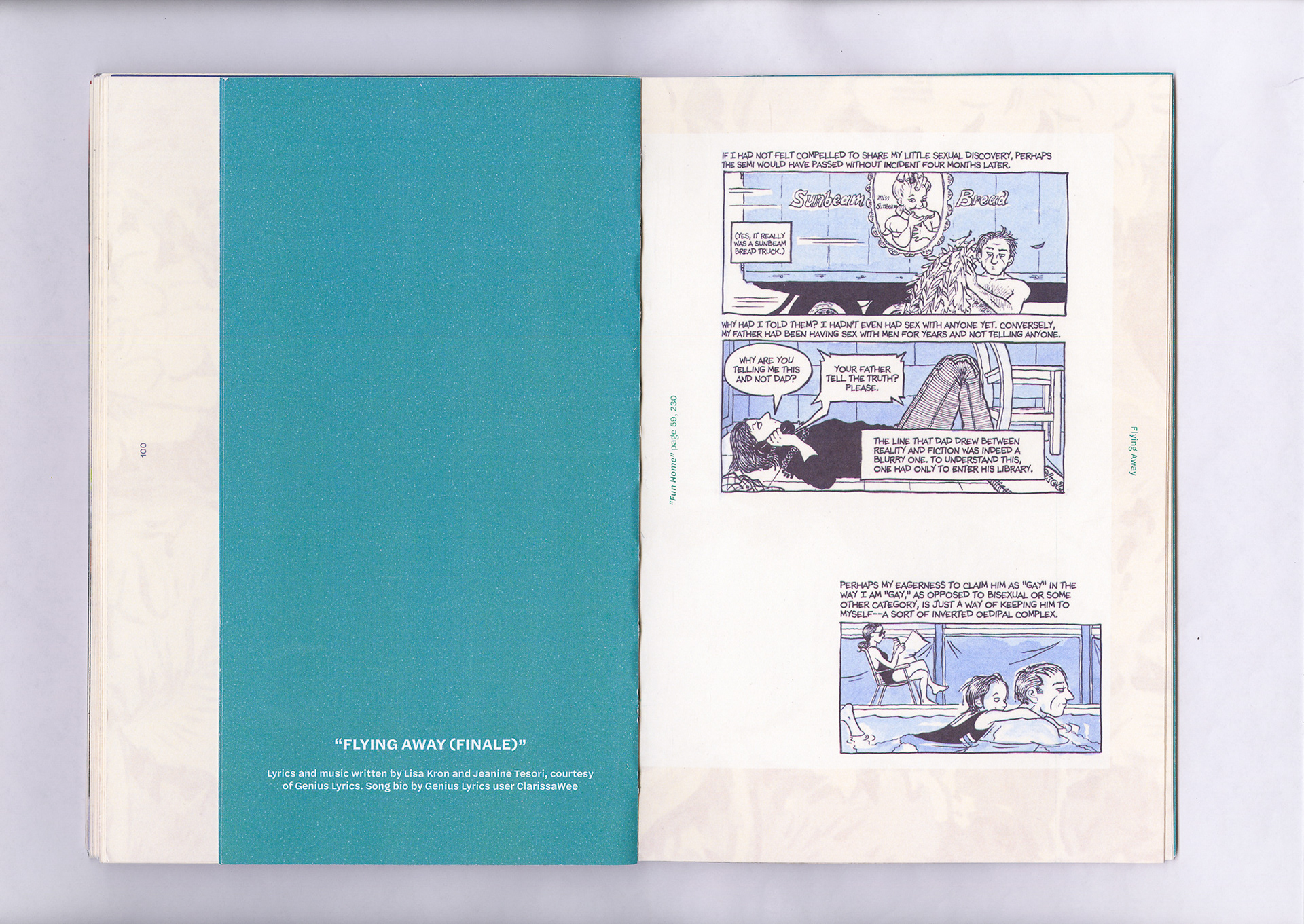





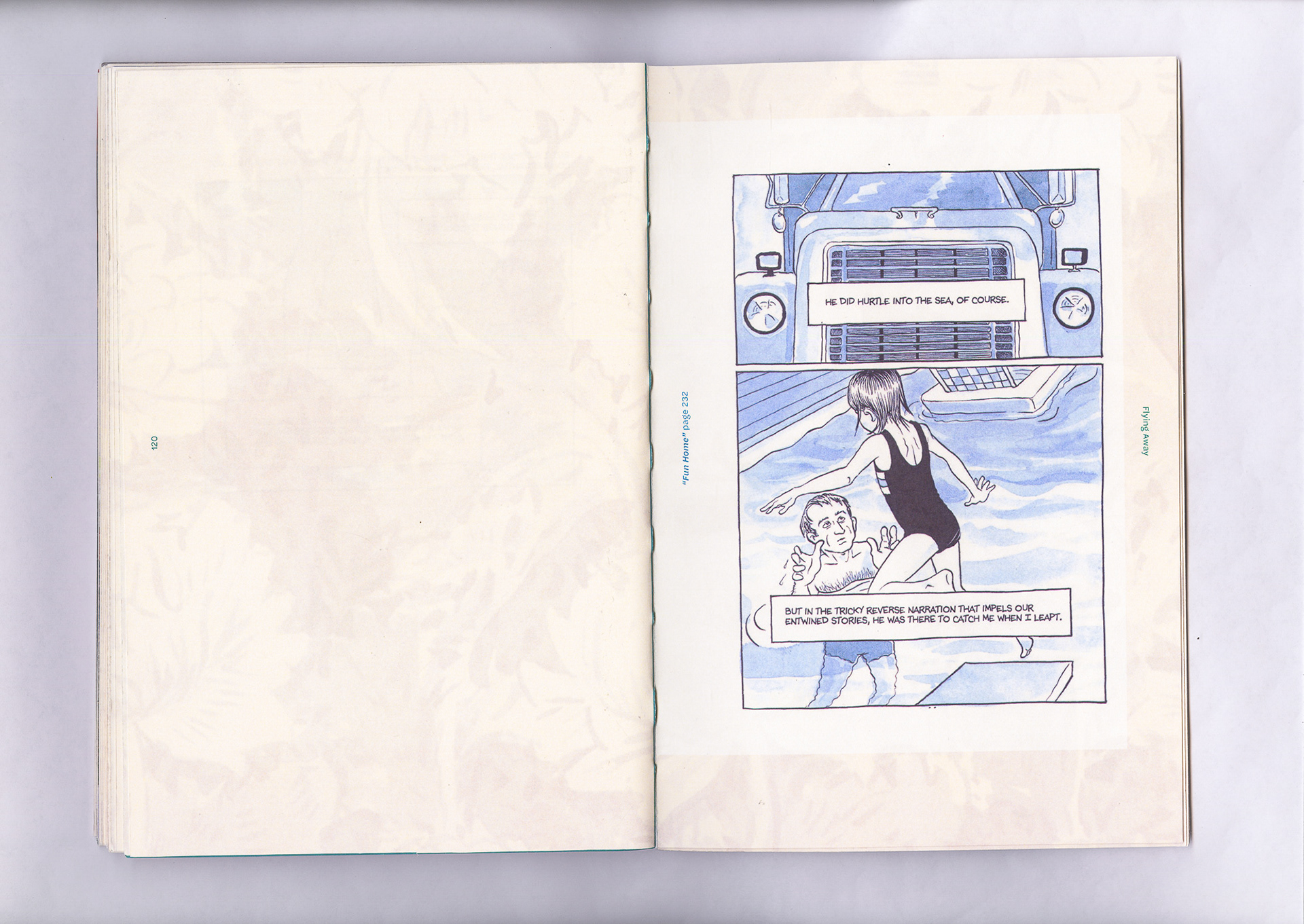
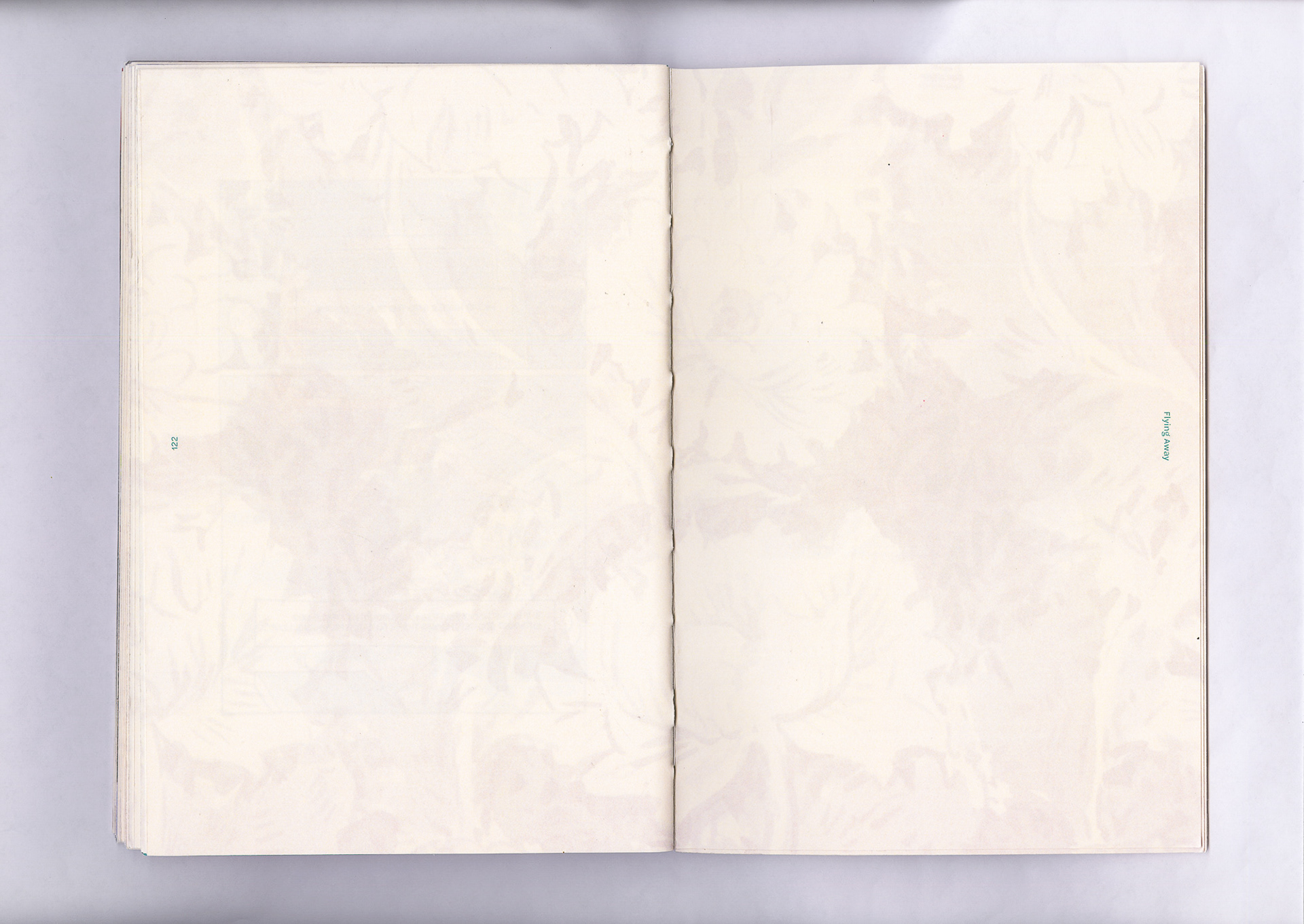









Attribution
Mentorship provided by Becca Leffel-Koren
Binding expertise provided by Amy Chen and Natalie Snyder
PT Serif designed by Alexandra Korolkova, Olga Umpeleva and Vladimir Yefimov for ParaType
Halyard Text and Halyard Micro by Eben Sorkin, Joshua Darden, and Lucas Sharp for Darden Studio
Lapture by Albert Kapr and Tim Ahrens for Just Another Foundry
Transcript copyright © 2015 NPR, at www.npr.org. All rights reserved. NPR transcripts are created on a rush deadline by Verb8tm, Inc., an NPR contractor, and produced using a proprietary transcription process developed with NPR. Accuracy and availability may vary. The authoritative record of NPR’s programming is the audio record.
All song lyrics are courtesy of The Original Broadway Cast of Fun Home on Genius Lyrics. Song bios are courtesy of Genius Lyrics users jazzjo and ClarissaWee.
Image Credits
p. 1-128: Alison Bechdel, appearing in “Fun Home,” 2006. dykestowatchoutfor.com
p. 9: Alison Bechdel, appearing in “Dykes to Watch Out For,” 1993.
p. 2, p. 29, p. 32: Nicole Bengiveno for The New York Times, 2006.
p. 8: Ian Thomas Jansen-Lonnquist for The Boston Globe, 2017.
p. 13, 19, 26, 27, 49, 61, 99: Joan Marcus, 2015-2016.
p. 33: Robert Gauthier, 2017.
p. 17 (right): Robert Giard, 1995. Alison Bechdel, Grand Isle, VT. Gelatin silver print. From “Particular Voices: Portraits of Gay and Lesbian Writers.”
p. 17 (left), p. 117: courtesy of Leanne Keefer Bechdel, uploaded to Bruce Allen Bechdel’s page on findagrave.com in 2006.
p. 30-31: Alison Bechdel for Seven Days Vermont, 2014.
p. 22: Steven A. Henry, courtesy of Getty Images, 2016.
p. 24: Walter McBride, courtesy of Getty Images, 2015.
p. 25: nomoredayjob on Ebay, 2015. “Alison Bechdel ~SIGNED & DOODLED~ Fun Home: A Family Tragicomic ~1st/1st HC+Photos!!”
p. 44: Greg Ruffing/Redux, courtesy of Rolling Stone, 2012.
p. 47: courtesy of Leanne Keefer Bechdel, uploaded to Helena Augusta Fontana Bechdel’s page on findagrave.com in 2013.
p. 55: courtesy of Impact Marketing, from an interview with Alison Bechdel by The Young Vic, 2018.
p. 59: courtesy of Center for Cartoon Studies, 2017.
p. 69: Jemal Countess, courtesy of Getty Images, 2015.
p. 72: courtesy of Lambda Literary, 2014.
p. 73: Sara Krulwich, courtesy of the New York Times, 2013.
p. 93: Jenny Anderson, 2015.
p. 121: Elena Seibart, 2012.









